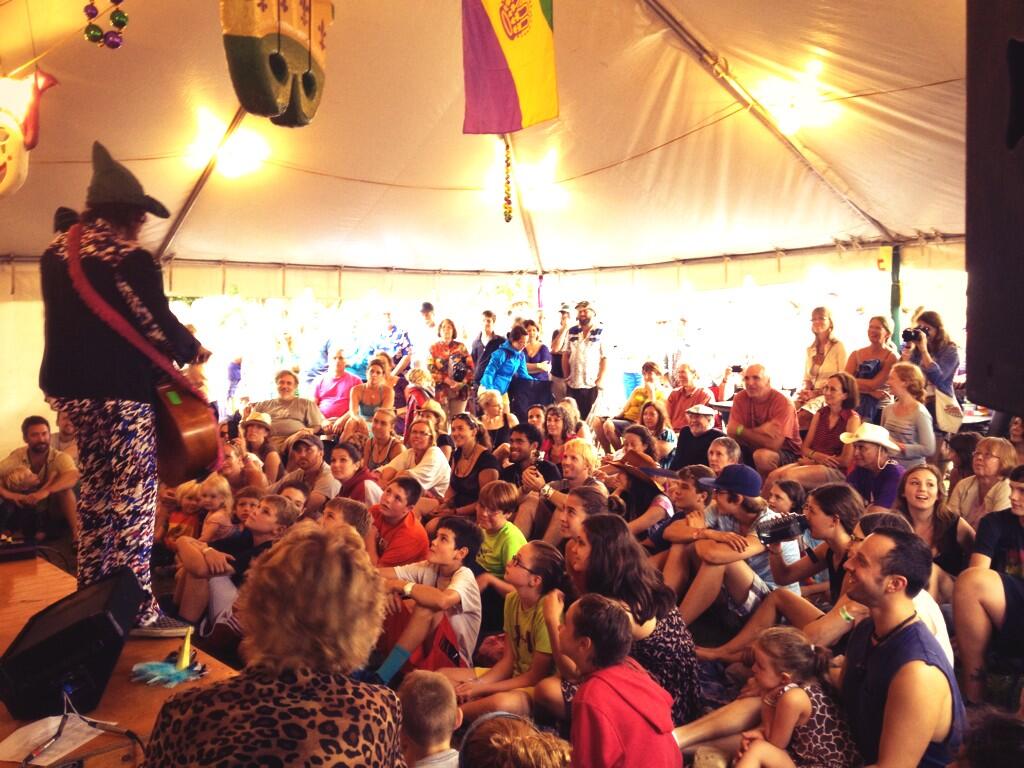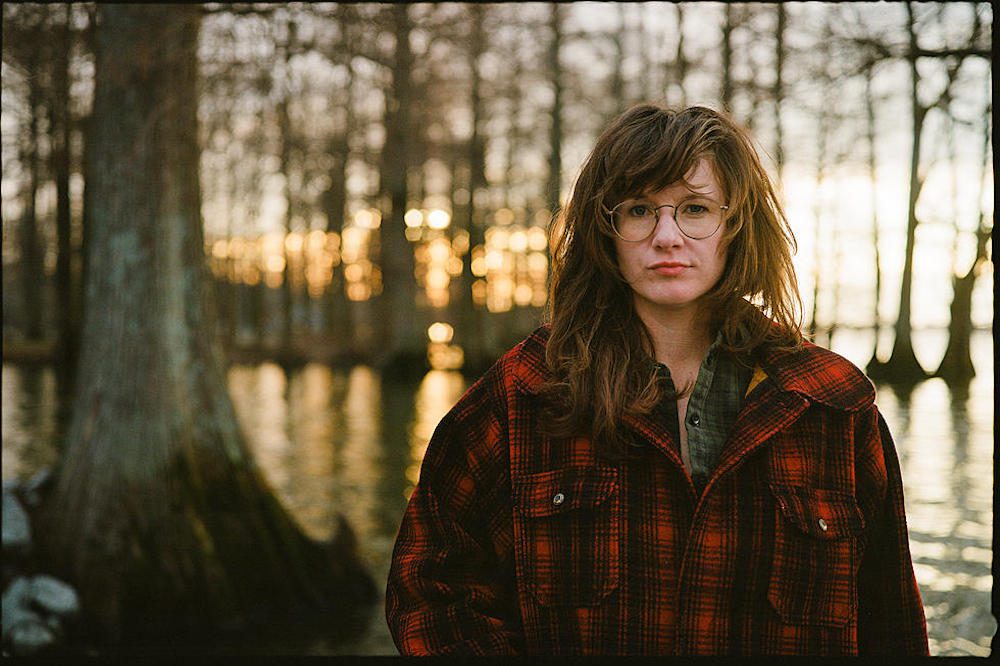
I took several road trips this year. At the beginning of 2013, adventure felt overdue—something about going to new places, with no routine or expectations, opens you up to hear music you’d never think to listen to otherwise. Below are the five biggest, best surprises from the road—hopefully, you’ll feel inspired to go looking for some adventure of your own.
5. Layla’s Bluegrass Inn—Nashville: This september I went to Nashville, TN for the first time in my life. Walking down Broadway felt like the scene in The Wizard of Oz when Dorothy lands in Oz and suddenly everything is in technicolor. Oh my God, I thought. Everything was lit up with neon! Everyone was wearing cowboy gear and drinking before noon! Every bar sold cheeseburgers! Wafting out of every single venue was the bass line of a country song so infectious that, had I heard it while walking down the street in New York City, I would have dropped whatever I was on my way to doing to go watch whomever was playing it.
Layla’s is a fashionably divey and slightly over-touristed honky tonk, brimming with down-home vibes and energy, and with a band to match: The Jones were on stage, fronted by the energetic and angular Memiss Jones, who looked too small for her upright bass but slapped its wood uproariously on the downbeat anyway. They played originals and covers with equal skill, always trending towards rowdier interpretations of Southern spirituals like “I’ll Fly Away.” They captivated the crowd: a band of what looked to be retirees on a country tour began square dancing on the floor, and behind the table where I was sitting, a misty-eyed cowboy nipped stoically at his drink, lips trembling during ballads.
Memiss Jones plays at Layla’s every Thursday, from “11:30 AM ta 2:00 PM” according to her website. I bought The Jones’ CD,and predictably, it wasn’t as irresistible as the live show had been. Honky tonk music works best in the rough, playful realm of spontaneity, and Memiss Jones worked the stage with an energy that could never be duplicated on recording.
4. Willie’s Locally Known—Lexington: There are better bars in Lexington, Kentucky. Really, there are. This one is located in kind of a strip mall parking lot area, with a dust-caked neon lit-up sign floating in the window and terrible food and bikers who play Bruce Springsteen on the jukebox. One night, wedged amidst “Born In The USA,” in the back room where they keep the football fans trolling for a quiet place to watch games, a bunch of banjos and mandolins lay piled on top of the pool table.
The state of Kentucky, in general, is not hurting for live musicians, but here they seemed to happen almost by accident, coming out of the woodwork without ceremony or audience. Six or seven men sat in a circle and unassumingly began to play. The word hootenanny came to mind. Dating back to the Civil War, when a hootenanny referred to a “meeting of the minds” between strategists. Hootenannies differ from shows in that they’re played for the process—for that complicated, invisible knot that ties people playing improvised music together—more than for the product: a show to entertain an audience. Though the venue also functions as a performance space, that evening did not involve a stage, only a collection of people sitting in chairs. Banjos dominated the impromptu stage plot, with about four for every two mandolins, plus a fiddle and a guitar. The very rough-edgedness of the performance contributed to its special magic, as if music could, under the right conditions, spring fully-formed from the beer-sticky dingy surfaces of a dive downtown, listless in the boredom of a Wednesday night.
3. Grey Fox Bluegrass Festival—Oak Hill: Set at the top of a hill of one of the most gorgeous sections of New York’s already gorgeous Hudson Valley, Grey Fox Bluegrass Festival has been an annual institution since 1976. The atmosphere of the event feels like homecoming—all the performers seem to be friends with each other, and with festival producer Mary Tyler Doub.
While not much of a road trip from New York City—the festival takes place about a two hour drive north of Manhattan—the difference in scenery couldn’t be vaster, with the Catskills looming in the background and cowboy hats rampant in the crowd. Old and young bluegrass fans turned out in equal measure, and to that end, the spectrum of the acts varied widely from traditional bluegrass bands like the Travelin’ McCourys to newer and more hybridized roots outfits. One of these, I Draw Slow, hailed from Ireland and brought a very light Celtic touch to their style, which mostly focused on expressive storytelling without compromising catchiness. Another, a cellist from California by the name of Rushad Eggleston, adopted a stage persona that originated from the made-up planet of Snee, and performed a blend of metal, bluegrass, classical, and frankly unclassifiable cello music. These two bands, while still relatively unknown compared to many of Grey Fox’s acts that weekend, garnered a lot of attention and sizable crowds for each of their performances throughout the duration of the festival.
Though Grey Fox has long represented a kind of home, a family reunion—and this was true for me, too; I used to live in the Hudson Valley—this year, the memorable acts were the ones that no one had heard of before, and who didn’t stick within the grooves of pure bluegrass. While still in keeping with the spirit endemic to the festival, they expanded and improvised on it, providing reassurance to the concertgoers, it seemed to me, that the bluegrass genre is not yet finished evolving.
2. Maryland Deathfest XI—Baltimore: Baltimore, MD, burial site and sometimes-home of Edgar Allan Poe, held up the Poe-ish legacy of the grotesque and absurd, of sublime revelation as discovered through darkness and extremes, with the eleventh iteration of the festival billed as “America’s most extreme annual metal party.” Highlights included acts like Sacred Reich, Sleep, Pentagram and black metal founding fathers Venom. Before their set even began, an audience that stretched backward from the stage about the equivalent of three full New York City blocks had appeared, packed tightly together onto the lawns, streets and parking lots that had been sectioned off as concert grounds for the outdoor festival.
Equally compelling were the concert-goers themselves, who descended upon Baltimore on Memorial Day weekend. On Sunday, the last day of the festival, downtown residents had cleared out, and the run down office buildings, streets and parks served as a veritable playground for metalheads. As I walked around the city, everyone I passed looked terrifying: clad in black and leather, heavy metal t shirts and metal chains, the festival goers seemingly changed Baltimore’s topography altogether. Just before heading into the festival, I saw a rare non-concert-goer—a homeless man, nearly disfiguringly withered and old, with a shopping cart in front of him and long hair that had coagulated into a single massive dreadlock—do a fantastically scandalized double take as an extremely tall and thin man walked by dressed in head to toe leather, combat boots, and extensive facial tattoos.
Venom appeared hulkingly on stage, with shoulders and thighs so huge that they often couldn’t dance or thrash, and instead just stood still and made menacing faces. Although the theatricality of metal shows has grown tamer since the nineties, the aesthetic of the performance was impressive: strobe lights pulsed, a yawning, doom-heralding bass line shook the framework of the stage, and a deep bass came over the loudspeakers: Ladies and gentlemen, from the depths of hell…VENOM!
Venom spit abuse at the front row and demanded a bigger mosh pit, reverberating—I’m sure—into the rest of Baltimore. One weekend every year, the city turns into Metal Central, so inescapably that walking around downtown feels like being in an episode of The Twilight Zone. The world abruptly became colored in a spectrum of things that were not metal to things that were very, very metal (24 hour Wendy’s, metal; getting lost on the way to the 24 hour Wendy’s, not metal.) Cars booming on the overpass above the road where I parked my car were nothing more than heavy doom bass writ small, and, for about a day, all other rock and roll sounded wimpy—and as if it were playing from about fifty miles away—by comparison.
1. Happy Home Old Regular Baptist Church—Amburgey
Lined-out hymnody, a style of church singing once prevalent in seventeenth-century British churches, gradually lost favor in religious communities once psalm books and greater general literacy became the norm. This a capella style of call-and-response singing, in which a group leader would sing one line which would then be slowly repeated by the rest of the congregation. The singing, which resembles shapenote or Sacred Harp songs, sounds ragged and ploddingly slow, as the singers were often unfamiliar with the tune and the words of the song they sang. But the often-dissonant vocal chorus created a particular kind of singing which today is more or less unique to the rural churches of Appalachia, including, notably, the Old Regular Baptist churches of eastern Kentucky.
I went to one such church this fall, in a small out-of-the-way building about an hour from the Virginia border. The Old Regular Baptists don’t allow music in church, nor do they encourage music in the secular lives of their members. This belief essentially stems from the thought that God cannot be worshipped by man’s hands, and that a pretension to beauty, or godliness, with the aid of a musical instrument disrespects God. I’m not religious, and I told the pastor of Happy Home as much before the service started, but I was interested in the music. It would be just fine for me to come to the service, he assured me. The Old Regulars are a small community, growing ever smaller, and their shrinking singing tradition represents a part of life in the mountains of Appalachia that may soon disappear.
Singing starts every Sunday at nine. Before the service, those who arrive early to church begin a song, usually led by a preacher, and others join in as they enter the church, shaking hands with everyone—and I do mean everyone—already gathered in the building. In good weather, the preacher throws open the windows of the church, casting the sound of the slow, swelling hymns up the mountains and echoing into the small towns of the valleys. Even the preaching in the church had a rhythmic, incantation-like quality to it, as sung as it was spoken, and marked with cadences and crescendos that felt downright bluesy.
Many people living in the area—religious and not—grew up with the sounds of these songs, so particular and evocative that they have a meaning to anyone who hears them. People often say the lined-out singing style sounds mournful. Most of the people who sing it disagree, instead thinking of the style as a joyful expression of praise.




